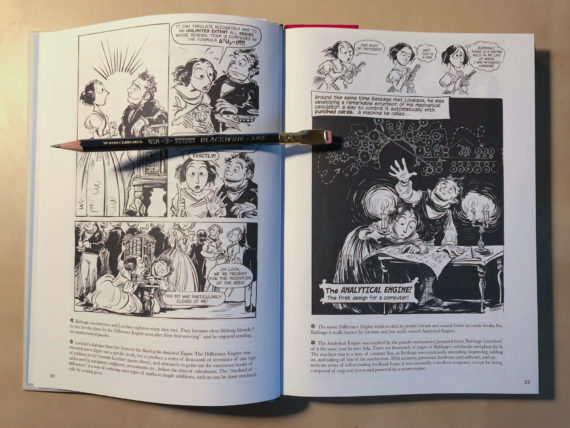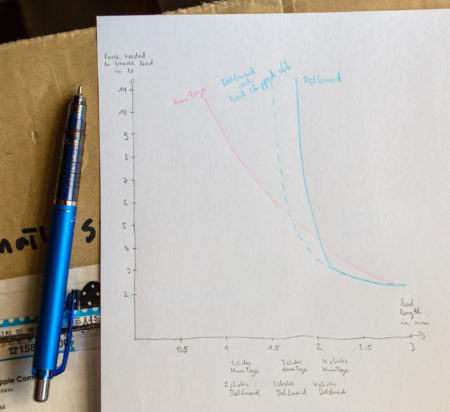16.2
I’m still not up to date in the world of stationery, so please excuse if this blog post does not include all information, but when I noticed the name Ada Lovelace in the latest Pen Addict Podcast Show Notes I had to have a look.
As you might now CalCedar is releasing themed Blackwings at regular intervals. They tend to have a number linked to the theme. This time the theme is “Ada Lovelace”, considered by many to be the first computer programmer [1]even though computers didn’t exist yet, and the number is 16.2.

My first university degree was in Computer Science, so this theme certainly made me curious and I followed the link to Blackwing’s web site.
So what does 16.2 stand for? According to CalCedar
The number 16.2 is a nod to the Analytical Engine’s storage capacity of 16.2 kB (0.00005% the storage of the average smartphone) and the backside of each pencil bears a binary pattern stamp of Ada’s initials AAL, the same initials she used to sign her work.
My first thought: if anything this seems more of a number for a Charles Babbage themed pencil. Storage capacity is hardware, Babbage thought of the Analytical Engine, Ada Lovelace was more about algorithms for the Analytical Engine (she made a famous translation of Menabrea’s Analytical Engine article that contained her computer program as notes) and about promoting the Engine.
My second thought: why use kB? I am not an expert in the Analytical Engine, but it was based on the decimal number system, it wasn’t binary based! The only way such a conversion would make sense would be if you wanted to compare the storage capacity to a modern machine, but it only makes sense if you want to implement the same storage capacity on a modern computer, as a simple comparison it doesn’t work because it’s not a simple as some other conversions, like converting Fahrenheit to Celsius – because of the way modern computers work there’s no 1:1 comparison.
Here’s an example. A number with one digit can be anything from 0 to 9, i.e. there are 10 possibilities. If you want to store this number in a modern, binary computer you have to use four bits. Each bit gives you two possibilities (0 or 1). If you have two bits you have four possible numbers (22 = 4) you can represent (00,01,10,11). Three bits give you eight possibilities (23 = 8), i.e. everything from 000 to 111. Four bits give you 16 possibilities (24 = 16). You want to represent one decimal digit (ten possibilities) in binary you need four bits, but you also get some waste (as you could actually represent 16 numbers). So why convert to binary?
My third thought: Where did this number come from. Ah, ok. Wikipedia says in the Analytical engine “There was to be a store (that is, a memory) capable of holding 1,000 numbers of 40 decimal digits each (ca. 16.2 kB)” [2]https://en.wikipedia.org/w/index.php?title=Analytical_Engine&oldid=813062715.
OK, I get it. The number is from Wikipedia.
A quick check:
40 digits each, 1041 = 2x, 2133 = 1.08 * 1040, 133 bits per 40 digit number
133*1000= 133,000 Bits, 133,000 / 8 = 16,628 Bytes, /1024 = 16.24 kB.
…but the Analytical Engine was an idea, not something that was actually built at the time. Babbage himself wrote
“In the drawings I have prepared I proposed to have a thousand variables, upon each of which any number not having more than fifty figures can be placed.” [3]Chapter VIII, Passages from the Life of a Philosopher, by Charles Babbage, 1864
Based on 50 digit figures, as described by Babbage in his 1864 book, the number on this pencil should be
1051 = 2x, 2167 = 1.87 * 1050, 167 bits per 50 digit number
167*1000= 167,000 Bits, 167,000 / 8 = 20,875 Bytes, /1024 = 20.39 kB.
To me, it looks like a poor Wikipedia copy and paste job, done without love or understanding of Ada Lovelace.
My imagination might be running wild here, but I imagine it like this.
We need a new person-themed Blackwing. Pick a pioneer who is not a white male.
I found one on the Internet. There’s a woman who was a programmer.
Great, look at her Wikipedia page and pick a number.
Got it.
Great job. Let’s finish early and go home.
The whole theme seems to have been put together without the due care and attention Ada Lovelace deserves.
Before I finish: there’s actually a quote from Ada Lovelace where she mentions pencils. You can see it on Google Books.
The comic book you can see in the picture is called The Thrilling Adventures of Lovelace and Babbage: The (Mostly) True Story of the First Computer. The edition I got is long sod out but you can still get the US version (hardcover released in 2015) or paperback ..or the UK paperback edition from 2016.
If you would like to learn more about Ada Lovelace have a look at




